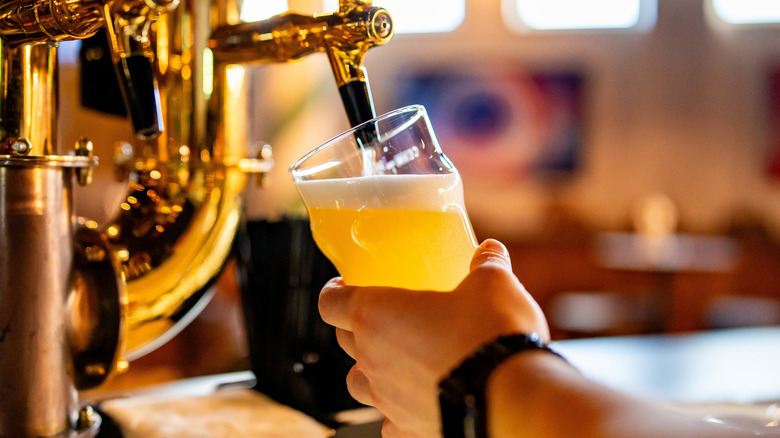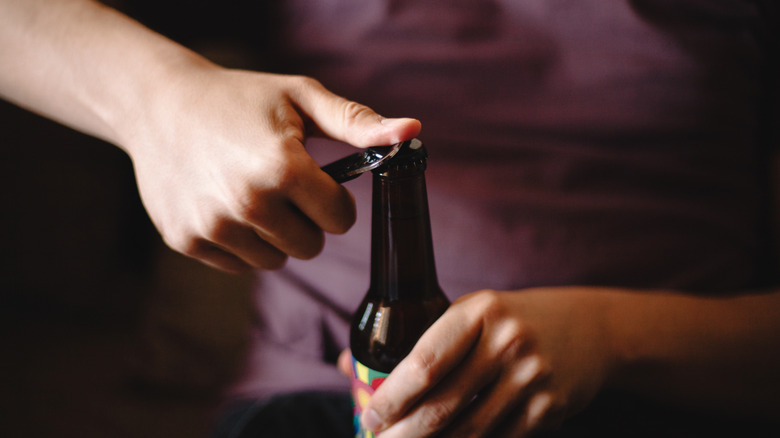Does Beer On Tap Really Taste Better Than Bottled Brews?
The ideal taste of beer is frequently debated by foodies and beer enthusiasts. While some — a group that included the late Anthony Bourdain — prefer to not analyze the alcohol too deeply, most people will have an opinion on whether beer on tap or beer served in the bottle is better. Personal preference plays an important role in the formation of these opinions, however, from a technical standpoint, one is clearly superior to the other.
Chris Cusack, the owner of Betelgeuse Betelgeuse and a Level 1 Cicerone, told The Takeout, "Beer on tap should taste better — that's kind of the whole promise. Assuming the lines are clean and the keg's fresh, you're getting the beer as the brewer intended: cold, carbonated, unoxidized, and not exposed to light." However, he did note that it's extremely common for people to drink certain beers from a bottle. "Plenty of our bar guests — including myself — have certain beers that they prefer in a bottle [...] Bottled beer has its place," Cusack told us.
Bottles and kegs pose their own challenges
Similar to learning to like a flavor of beer you hate, switching from drinking your beer out of bottles to drinking it from a keg (or vice versa) can be pretty difficult for those of us set in our beer-drinking ways. Plus, despite beer on tap typically being better quality than bottled beer, it isn't always better. In fact, beer on tap can taste far worse than bottled beer thanks to one thing in particular: dirty draft lines. If the tube the beer travels through on its journey from the keg to the tap isn't in ideal shape, customers could have a terrible drinking experience. "Even great beer will taste off if the draft system isn't clean," Chris Cusack explained, "you get sourness, buttery flavors, weird funk that shouldn't be there. Everyone on my team knows: clean lines are non-negotiable."
Beer bottles pose challenges of their own. Aside from not storing your bottled beer in a warm place, you should also make sure it isn't exposed to direct sunlight. Cusack said, "Light-struck beer is a real thing. UV rays react with hop compounds and create this nasty skunky aroma — think wet cardboard meets high school bus stop." Kegs have the advantage in this department. As Cusack noted, "Kegs usually hold up better over time, mainly because they're sealed up tighter and protected from light and oxygen."

